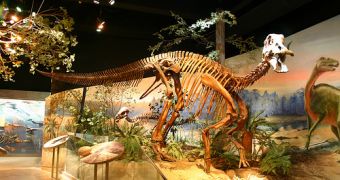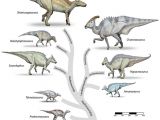University of Alberta researchers used a new fossil-dating technique and concluded that some non-avian dinosaurs survived mass extinction by 700,000 years.
This direct-dating method was used on a fossilized hadrosaur bone found in New Mexico, and contradicted the widely accepted idea that the end of the age of dinosaurs occurred between 65.5 and 66 million years ago.
The mass extinction is believed to have been caused by debris from a giant meteorite impact that blocked out the Sun, and caused extreme climate conditions that killed vegetation all over the globe.
The research team was led by Larry Heaman from the Department of Earth and Atmospheric Sciences, and they determined that the fossilized femur bone of the hadrosaur was only 64.8 million years old.
This means that this herbivorous dinosaur was still alive 700,000 years after the mass extinction event, which apparently did not wipe out all non-avian dinosaurs, as many paleontologists believed.
The most commonly used method of dating dinosaur fossils is called relative chronology, and consists in estimating a fossil's age according to the known depositional age of a layer of sediment in which it was found (where possible).
It can also be estimated depending on the known depositional ages of layers above and below the fossil-bearing horizon.
However, it is very difficult to obtain accurate depositional ages for sedimentary rocks, so the depositional age of most fossil horizons is not very well estimated.
A reason for the difficulty of this chronological approach could be that over millions of years, geologic and environmental forces may cause erosion of a fossil-bearing horizon, causing a fossil to drift or migrate from its original layer in the strata.
The new direct-dating method that Heaman and colleagues used is called U-Pb (uranium-lead) dating, and it uses a laser beam that unseats minute particles of the fossil, which then undergo isotopic analysis.
Living bones contain very low levels of uranium, but during fossilization (normally a period under 1000 years after death) bone is enriched in these elements.
Over time, the uranium atoms in bone decay spontaneously to lead, and once the fossilization process is complete, the uranium-lead clock starts ticking.
This is why the isotopic composition of lead determined in the hadrosaur's femur bone is an exact measure of its age.
Not only this technique is more accurate in determining the age of the fossil bone, but it can also tell the type of food a dinosaur ate.
Heaman and his research colleagues speculate that there could be several reasons why the line of this New Mexico hadrosaur survived the great mass extinction events of the late Cretaceous period.
One of the reasons could be that in some areas, the vegetation survived, so a certain number of hadrosaur species were able to survive.
Another hypothesis is that dinosaur eggs could have survived in extreme climatic conditions, and the researchers believe that more research is necessary in this direction.
All in all, this new dating technique could prove that there are many other fossil samples with a different age than previously thought, so the end of the dinosaurs will have to be revised.

 14 DAY TRIAL //
14 DAY TRIAL // 
